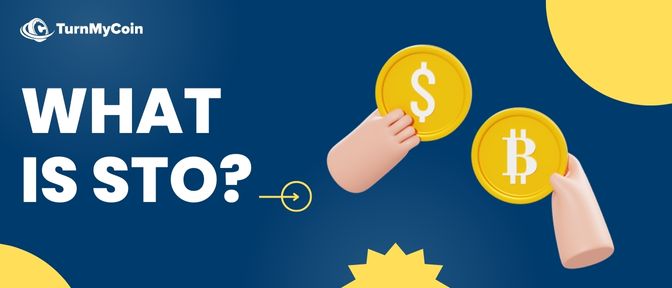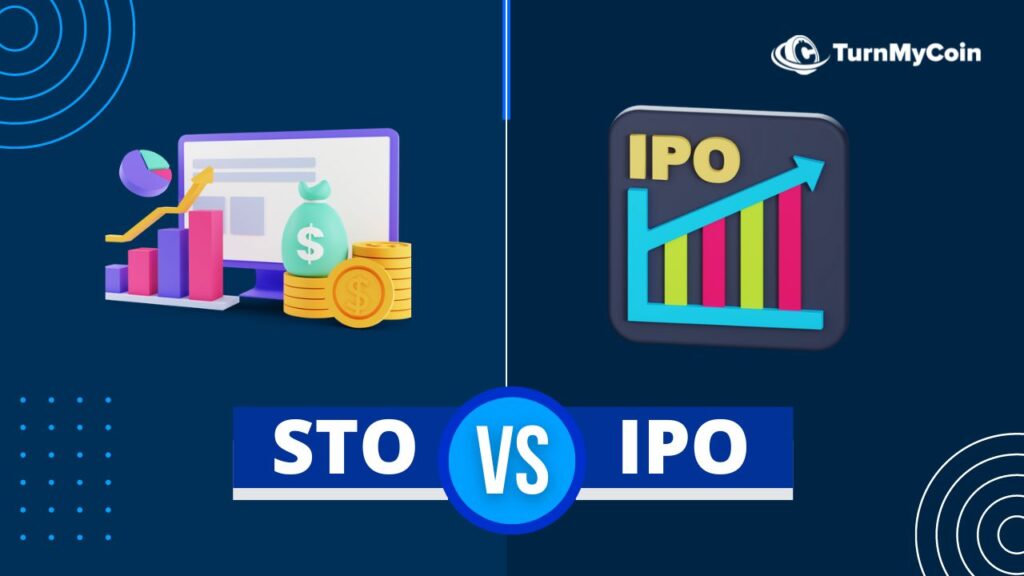Last updated on March 22nd, 2023 at 09:19 am

Introduction
When it comes to raising capital for any project, especially for a blockchain project, the options are limited. However, with STO and IPO companies have been able to promote their projects and also get initial funding. Although both STO and IPO are ways to raise funds for a company, they differ in their approach.
The security against which they raise funds can be equity, stocks, bonds, and any other instrument that gives the right to income and claims on the assets of the issue in form of debt or liquidation assets. Basically, STO is also a type of IPO, but then what is the difference between the two, if they follow the same regulations?
Is there any advantage of choosing between a Security Token Offering Vs Initial Public Offering (STO Vs IPO)? The article will discuss and describe all the major differences between the two and which one should a company go for in order to raise funds.
Let us first get to know which all exchanges you can use to buy your cryptocurrencies from:
What is an IPO?

An IPO or Initial Public Offering is a tool that private companies use to raise funds and provide some part of the ownership to the investors.
IPO helps companies raise a lot of money and greater ability to grow and expand. After the evaluation of the company is done, IPO shares of the company are priced through underwriting due diligence.
Once they go public, they offer the previously owned private shares to public ownership. The existing private shareholder’s shares become worth the public trading price.
Once the IPO is launched, investors will come in to buy the shares in the company and contribute to the capital of the company shareholders’ equity. Investors can be individual or institutional. Shareholders who purchased the assets through the IPO will show as a part of the company’s ownership.
What is an STO?

STO or Security Token Offering is a digital token that is supported by blockchain technology. It is used to represent a stake in the asset. It enables digital funding while still complying with government regulations.
We will briefly refer ICO (Initial Coin Offering) here to explain STO.
STOs are very similar to an ICO (Initial Coin Offering) as they are fungible tokens and they hold monetary value.
However, unlike ICO, which can be done by a company and an individual, STO is not for everyone. There are very few regulations in an ICO which often leads to scams and frauds, as anyone can go for it. Therefore, there is always a risk of investing money through an ICO. With STO, there are strict regulations, financial audits, and a lot more checks due to which only genuine companies are able to apply for it.
STO is a digital representation of real-world assets just as bonds, stocks etc. STO was created as regulatory bodies emphasized more on secure legislation for tokens. It helps the tokens to comply with the relevant laws and regulations.
Difference between Security Token Offering vs Initial Public Offering

When we talk about STO Vs IPO, both of them are very similar in nature but they also have some major differences. Both of them are methods of raising funds by a company based on tangible assets.
1. Types of assets
In an IPO, investors buy stocks that represent the equity in a company. This equity represents the ownership in the company based on a certain percentage.
In an STO, the investors buy tokens of a company that are based on blockchain technology. The token represents the value of company assets and not the equity. So the investors will have the right to profit dividends (rewards), but without any kind of ownership in the company.
2. Cost
Cost is one of the big factors that differentiate between STO Vs IPO. It is estimated that an STO campaign would cost 40% less than an IPO.
One of the major factors here is that STO is carried out in a digital form on a decentralized blockchain network which involves less cost. Also, smart contracts have regulatory compliance which allows effective same and exits by decreasing the intermediary fee.
3. Partial Ownership
The investors in IPO not only invest in the assets but also become the owner of a certain percentage of equity of a company. It makes them part owners in the company with voting rights on various decisions.
However, in the case of an STO, the investor is only investing in the value of the asset of the company and does not get any ownership rights or equity in the company.
4. Regulations
In the case of STO Vs IPO, both are bound by certain legal compliance and regulations. Since it requires lawyers, advisors, and experts from the industry, it would also require money for the same.
These costs are more in an IPO when compared to an STO. With STO, the supply is more direct and transparent. Also, it minimizes brokerage fees compared to conventional investment banks in an IPO.

5. Jurisdiction
One of the major differences between STO Vs IPO is the borderless jurisdiction. In an IPO, there are certain jurisdictions that shut down any foreign investor for the company. Therefore, there are only limited geographical locations that are allowed to invest in an IPO.
An STO follows borderless jurisdiction as the tokens have a uniform code around the globe. Therefore, it provides an incredible advantage in boosting the investor pool as anyone can invest in it.
6. Trading platform
Trading in the security tokens through an STO is done 24×7 with 99.99% uptime. Since they are decentralized autonomous organizations, the administrative responsibilities are done by executives, stakeholders, brokers, and more.
It is not the same in an IPO, which is only open for a limited time and has certain time restrictions for operation.
7. Pros and Cons

Pros & Cons of IPO
There are a lot of benefits with an IPO due to which most of the private companies go for it to raise capital. Here are some of the key advantages.
Pros
- The company gets access to investment from the entire investing public to raise capital
- It facilitates easier acquisition deals and increases company exposure.
- Increased transparency with quarterly reporting, helps the company receive more favorable credit borrowing terms.
- Increased public awareness about the brand and the company.
Cons
- IPO is not easy for private companies as it sounds. It includes a lot of procedures, rules, regulations, and other things that need to be dealt with before an IPO can be launched. Also, the regulations set for an IPO are both burdensome and costly. It requires more stringent reporting of company finances, audits, quarterly and yearly financial reports, and a lot more.
- Once the IPO is launched and shares have been sold to the investors, the continuous scrutinization of the Stock price in the market will keep happening by the investors and analysts.
- One of the major drawbacks of the IPO is that the founder might lose control of the company. Since the shareholders have voting power, they have the right to make any decision against the founder, if they are not kept happy.
Pros and Cons of an STO
Pros
- STOs can be used to tokenize any asset or financial instrument easily for trading online. Due to this, early-stage businesses can easily raise a large amount of capital without having to pay huge fees.
- STO provides a lot of flexibility for business owners to run the business as they want to. Security tokens can be traded after the initial sale, making them the best liquid investment.
- STOs are not held by a single market for trading and investment. The tokens that are offered remains uniform across the different region, which makes it easy to buy for investors from anywhere in the world.
- The compliance is strict in an STO which means that the compliance is hard coded into the security token, increasing the standards developed on blockchain.
Cons
- Complex compliance is both a pro and a con for STO. The complex compliance process has legal regulations over multiple jurisdictions. You also need an experienced team with a business background in a range of fields to help you through the STOs.
- STO requires companies to create their own token and a platform to manage their sales. It is a complex process and would require more funds and an experienced team with technological expertise.
- STO is a fairly younger market when compared to an IPO, therefore, there are certain risks involved for investors.
Verdict
Here are some of the major and important differences between a Security Token Offering vs Initial Public Offering. Both of them are one of the most effective ways of raising funds for any company or project.
IPO has been one of the oldest and most successful ways for companies to raise funds directly by offering partial ownership based on purchased stocks.
STO on the other hand came into existence in 2018 after the major drop in the crypto market and the need for strict regulation in the future. STO is said to be the next big platform that will use blockchain technology and will make raising funds a lot easier.
It could be easily said that new businesses and companies can easily go for an STO while companies that have been running for years are better to raise funds through an IPO.


